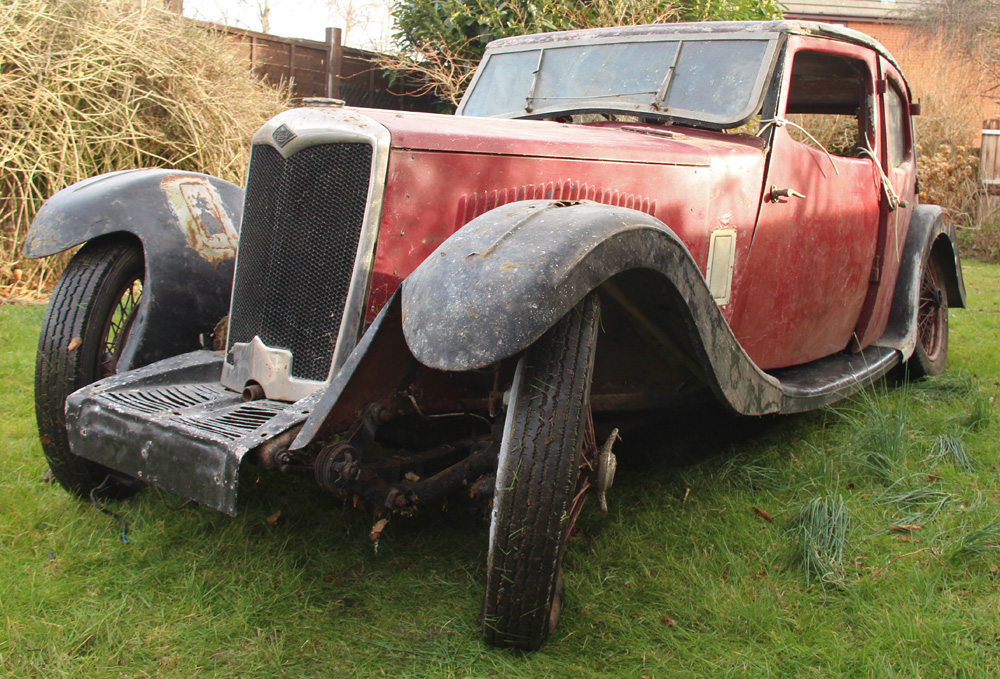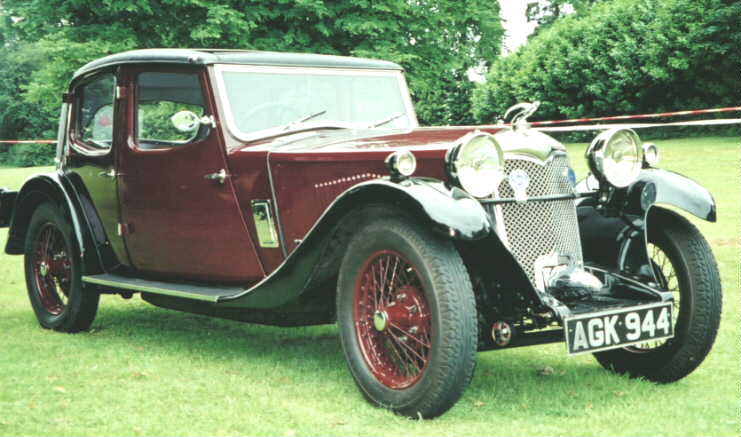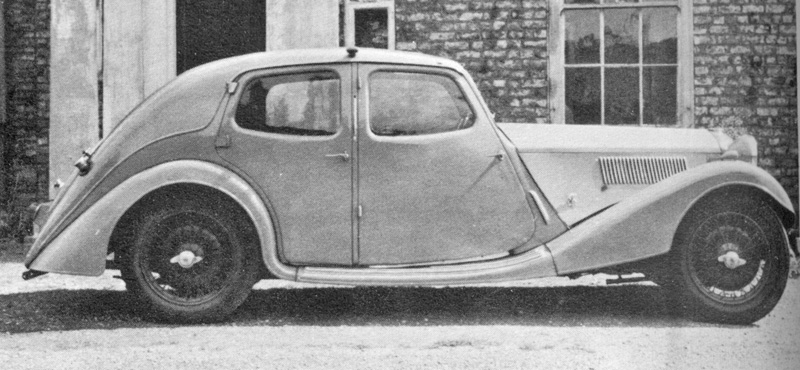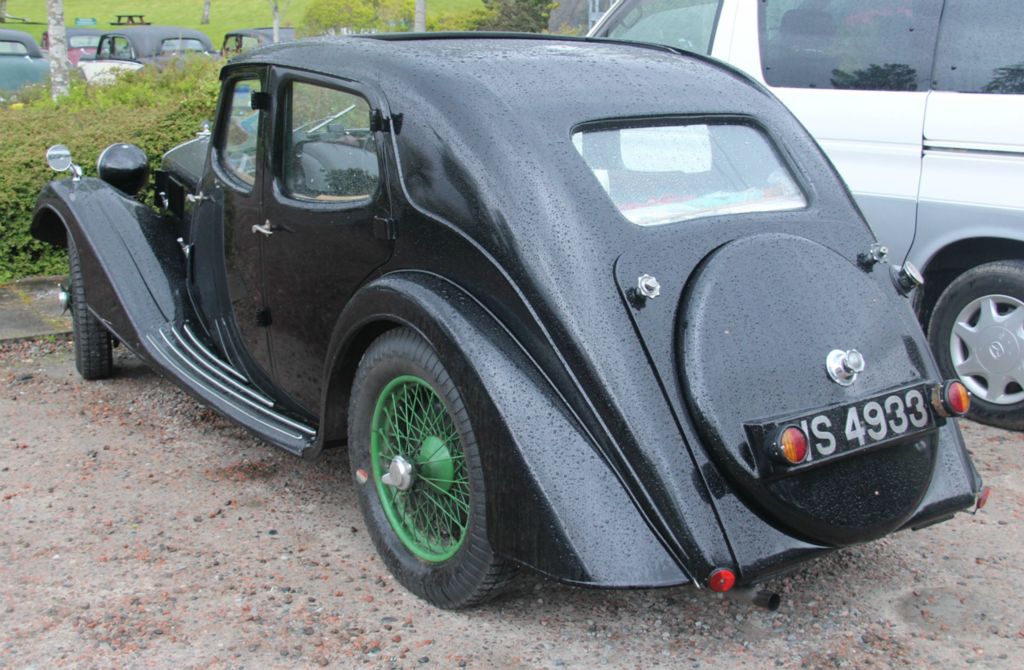Riley Kestrel 4-light
Chassis: | 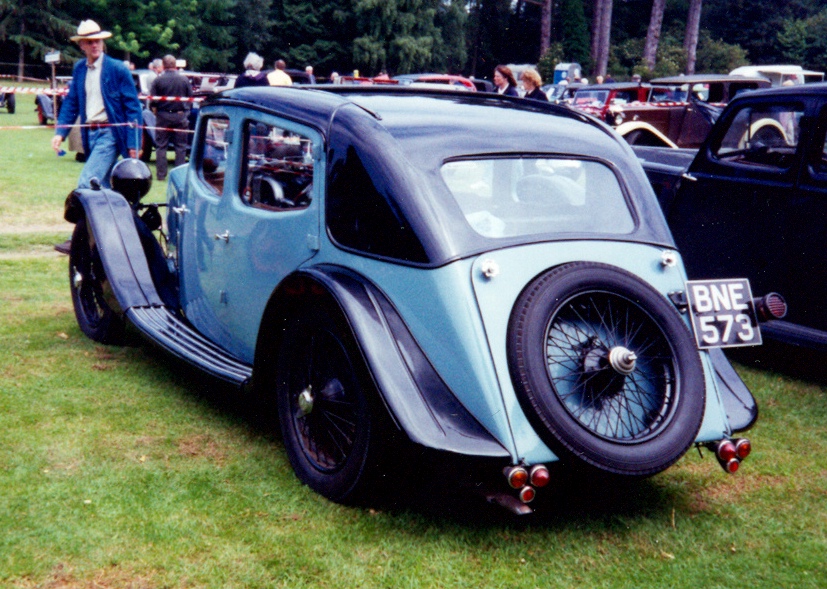
| The Kestrel was launched in 1932 as a 4-light sports saloon and proved to be one of Riley's best selling models. Little wonder then that it remained in production, albeit in a revised 6-light style, until 1940, making it the longest lived Riley body type. |
Riley Archives Project: Riley Kestrel
The 4-light body was launched in 1932 on the 14/6 chassis. Visually the front was little different to some of the other current bodies, but the Radiator was shorter, with a lower bonnet line to enhance the sporty lines of the model. This point of difference was much more noticeable on the nine and 12/6 models launched the following year. Very early 6 cylinder cars also had a stubbier tail with clamshell bootlid wrapping round the tail. Later cars and all 9s as far as can be ascertained had the more familiar sweeping tail, with the smaller bootlid opening.
The big difference was at the rear, where the roof swept down to the tail of the car, enclosing a sizeable (for the period) boot, and a recessed spare wheel. Some of the early 6 cylinder cars had fabric covered roofs, but this appears to have been a short lived fashion, and it is unclear how many were built as such. These early cars had the coach line from the roof carried around the base of the rear window, whilst later cars, particularly the 12/4 and 15/6 models, had the line swept down the bodywork between rear wing and bootlid to the tail. Even with the earlier design, the distance between the top of the rear wing and the base of the roof coach line could vary, with some straight lines and others dipping to the rear.
The Spare wheel was mounted on the tail of the car, and on early cars was open to the elements. Later, a wheel cover was made available as an extra, and then on the revised 12/4 and 15/6 models, the spare wheel became more fully enclosed, and either the wheel cover was included, or the wheel was mounted on the inside of the boot lid.
The low body was acheived by the patented Riley rear footwells which dropped between the chassis rails and prop shaft, allowing the rear passengers comfortable accommodation without disrupting the graceful lines. The 12/6 and 14/6 chassis shared the same basic body (though that doesn't necessarily mean they are interchangeable!), whilst the 9 was very similar but smaller. The larger body was then revised for the 15/6 model to give it the same styling features as the new 12/4 body. Front wing profiles also changed a little, with the cut aways at the front varying, as did the depth and profile of the valance leading back to the running board. Running boards varied a lot more, with some early 6-cylinder cars having inset rubber pads, or stainless(?) trim cappings, whilst the 9s were lucky to get chrome ribs, many just having the ribbed plain metal. At the rear, the wings varied less, but the central rib seen on earlier cars was missing on many of the 12/4 models.
Bumpers were not factory fitted to the Kestrel 4 Light before the launch of the 12/4 and 15/6 in late 1934, and then they were only available as options. The 1936 model Kestrel 9 was also fitted with bumpers as an option, possibly made standard during the year.
Needless to say, the Kestrel was one of the most popular Riley bodies, still selling well (in 6-light form) right up to 1940. While the larger models changed over to the 6-light body for the 1936 season, the Kestrel 9 retained a revised version of the 4-light body until it was withdrawn in late 1936 / early 1937. Curiously, a few 4-light Kestrels were built on the 12/4 chassis during the 1936 season, utilising the revised Nine body of the time.

